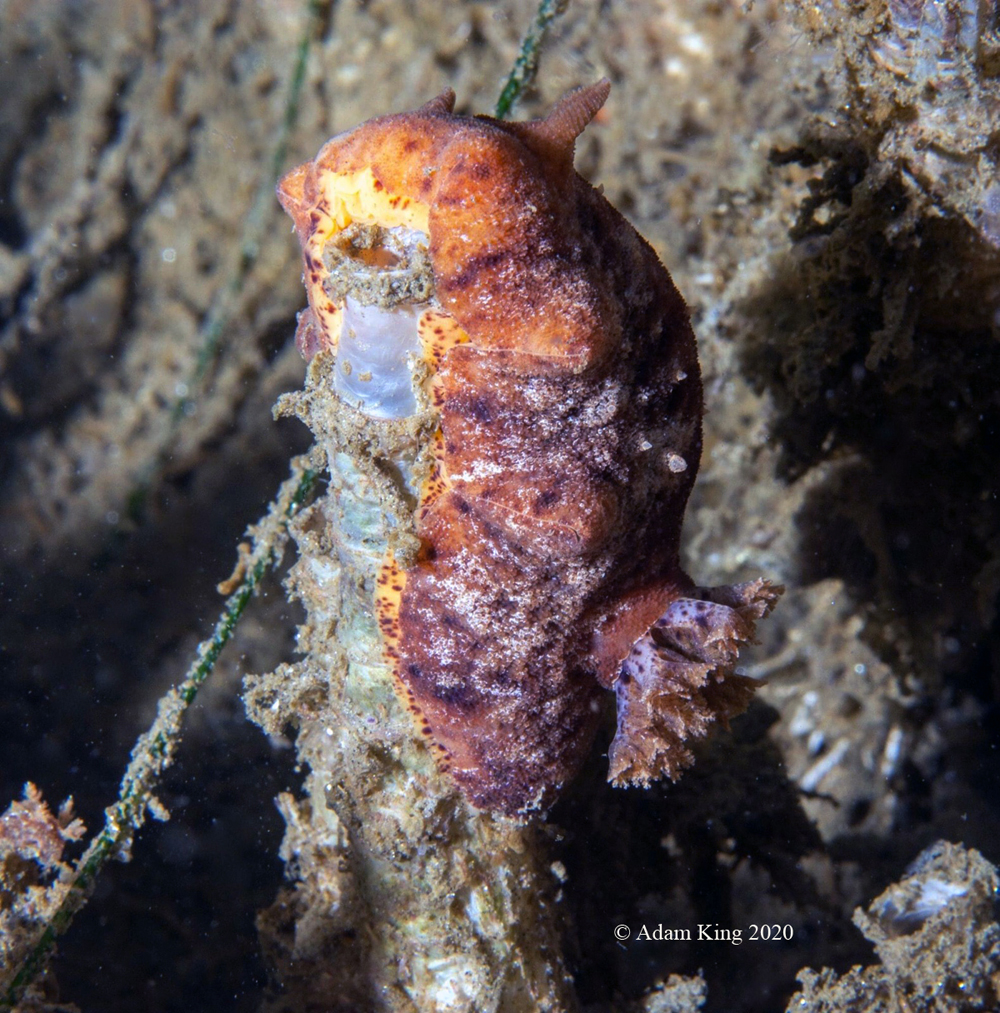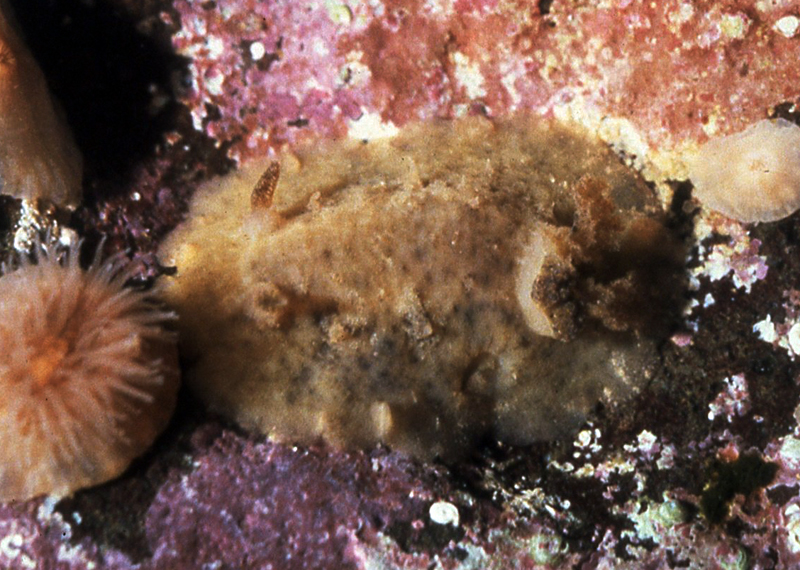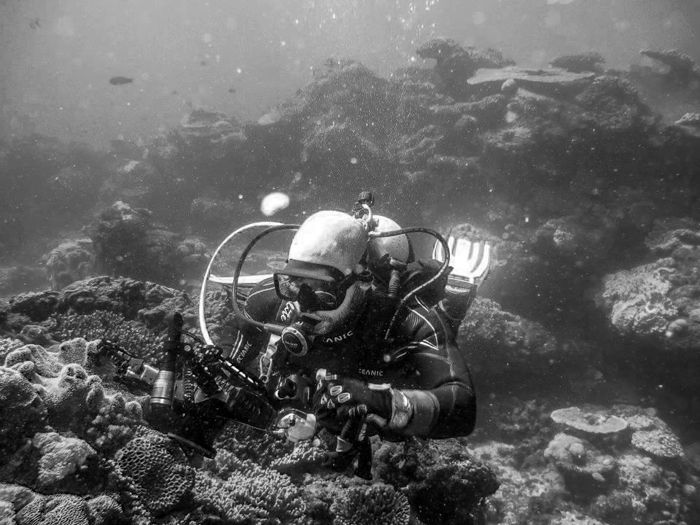 |
Image courtesy of Alan King
La Jolla Shores Dive Park, San Diego, Calif
Image courtesy of Dave Behrens
 |
Taringa aivica Marcus & Marcus 1967 Hello fellow campers, fellow hunker downers, slug-o-philes, nudi-freaks and San Diego divers - Have you ever seen this critter? Well you have now. This is only the third documented sighting of this species in southern California. We ran Taringa aivica as our BOW back in 2002 based on a couple specimens photographed by Ali Hermosillo in Puerto Vallarta. Her specimens were quite different in color from our southern California critters, and may turn out to be distinct after careful DNA analysis. Also, Angel Valdes has shared that Taringa aivica is extremely variable in color. In Costa Rica he found animals varying from light grey and yellowish cream to reddish brown and almost black in the same localities. He adds - I'm not sure there is more than one species, so it would be interesting to sequence a few specimens. After receiving Adam's photo, I shared it with all the local nudibranch offionados and after some head scratching and revisiting past literature Buddies Terry Gosliner and Jeff Goddard suggested this Taringa. Having published the first account of this species, in California waters, back in 1982, I brushed the dust off the paper, read it again and agreed. While we don't have much to go on here in Adam's photo, as his specimen was very shy, hiding behind a tubeworm tube, the notal tubercles do resemble those seen in Taringa. I have included one of my old Kodachromes here for comparison. The spots on the base of the gill and along the foot margin are new to us, although not visible in my photo, are mentioned very breathily in the 1982 paper. Adam photographed this specimen feeding on a sponge living on the tubeworm, Eudistyla at a depth of about 60 feet off La Jolla Shores, a popular southern California dive spot. La Jolla divers - keep your eyes open for this rarity. Reference: Behrens, David W. & Robert Henderson. 1982. Taringa aivica timia Marcus & Marcus, 1967 (Nudibranchia: Doridacea) in California. The Veliger 24(3): 197-199. |
Dave Behrens
Sammamish, WA 98074
Jul., 2020
Send Dave Behrens email at davidwbehrens@gmail.com
Photo courtesy of Alan King

Alan has been diving for roughly 10 years, beginning his career underwater in Okinawa, Japan. Over the last several years he has lived in Australia (Queensland/Brisbane) and dove all over the world. Alan made it a point to find water and get into it where ever he went. Alan is presently based out of San Diego and frequently dives La Jolla Shores in the evening to see what tiny critters crawl out of hiding to enjoy the black of the abyss. Alan also attributes a lot of my photography to his great group of buddies (Steve, Brad, Matt, Janet, Skip and John) who keep him oriented and alive while he scours the bottom for sea slugs.
Send Alan mail at ak00665@yahoo.com
|

Attention all you Sluggers, and you know who you are! The NSSI 2nd edition is now available in ebook PDF and book form . The hard back version will become available Nov. 1st. Both will cost $65 (individually). You will need to jump through a few hoops to get the electronic version as pdf distribution is protected by Adobe ID!! Please read the following to enable reading your electronic purchase! This new 2nd Edition is updated and reorganized, including 185 new species. Among other features, the new edition includes additional photographs of species, an identification key, and an up-to-date classification reflecting the latest evolutionary relationships. The Indo-Pacific represents the largest expanse of tropical ocean in the world, stretching from the Indian Ocean coast of southern Africa and the Red Sea to the central Pacific of the Hawaiian Islands, Easter Island and the Marquesas. This region supports the most diverse marine fauna of any place in the world for most groups of marine organisms. The nudibranchs and sea slugs are no exception to this rule; there are about 3,000 described species of these organisms in the world and at least 40% of these have been found exclusively in the Indo-Pacific tropics. This book illustrates 2,138 Indo-Pacific nudibranchs and sea slugs, including many undescribed species.
|

|
